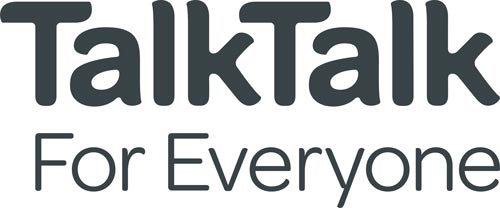Can ‘Smart’ Opportunity Areas help close the education disadvantage gap?
28.01.22
In 2016, Secretary of State for Education Justine Greening introduced a new initiative to increase social mobility in some of the UK’s most disadvantaged communities through targeting national and local resources.
The Department for Education (DfE) identified twelve ‘Opportunity Areas’ most in need of support using a range of indicators, primarily based on education: Blackpool, Derby, North Yorkshire Coast, Norwich, Oldham, West Somerset, Bradford, Doncaster, Fenland and East Cambridgeshire, Hastings, Ipswich, and Stoke.
A total of £72m was initially allocated to the programme, meaning that following initial scoping work, just under £6m was made available to be spent locally in each of the twelve areas. A further £18m was allocated to extend the programme to the end of August 2021 – around £1.5m more for each OA. The first payments went out to the areas in October 2017.
We want to see the scope of OAs widened to include issues such as health and housing, creating ‘Smart’ Opportunity Areas.
There is already clear evidence to show that education outcomes are significantly impacted by factors beyond the school gate. This means that school interventions alone will never be enough to tackle the long-standing education disadvantage gap.
“Opportunity Areas work because they recognised the fact that different communities already faced different challenges on education, even before the Covid-19 schools shutdown which we know has affected our least privileged children the worst.
“The challenges for schools in Rotherham, where I grew up, aren’t the same as for schools in Halifax, or for schools in Leeds or Selby. A Whitehall one-size-fits-all approach can only ever get us so far on raising education outcomes. In the end, we also need a more bespoke approach for individual communities.” – Justine Greening
Have Opportunity Areas worked?
There are already strong signs of initial progress. The programme was introduced in the academic year 2017/18, so the earliest signs of impact would be in the data for the academic 2018/19 academic years.
- Early years outcomes for disadvantaged pupils have improved in 9 of the 12 OAs. The greatest changes in FSM children achieving a Good Level of Development, between the baseline of 2017 and 2019, was in places where the OAs prioritised the early years, including Derby (+10ppts) and Oldham (+5ppts).
- Phonics results for all pupils have increased in 10 of the 12 OAs. In Scarborough (North Yorkshire Coast), the improvement in pupils meeting the expected standard in phonics, between 2016 and 2019, was +4ppts.
- In 10 of the 12 OAs, Key Stage 2 combined attainment data for all pupils has increased by more than the national rate between 2016 and 2019. Between 2016 and 2019, on average the OAs saw a 11.8ppts rise in maths outcomes at KS2, which was 2.9 ppts higher than the increase in England overall.

Blackpool
Another way to assess progress is to compare the OAs to non-OA districts which are otherwise similar.
- In Oldham, the proportion of all children achieving a good level of development – a key early years metric – rose 4 percentage points in the academic year to 2018/19 to 68.1%. Over the same period, neighbouring Rochdale saw a slight decrease of -0.2 percentage points to 66.2%.
- At Key Stage 1 in 2018/19, Blackpool recorded a 1.5 percentage point increase to reach 82.2% of children achieving the expected standard in phonics. In contrast, North East Lincolnshire, a coastal area which is similar in some respects, saw a decrease of -0.6 percentage points to 81.7%.
- In Bradford, the proportion of pupils who achieved the expected level in reading, writing and maths at Key Stage 2 rose 2.1 percentage points to 62.7% in 2018-19, which was twice the increase seen in Birmingham over the same period – a rise of 1 percentage point to 62.3%.
How place impacts on education
Our analysis of government data found that the area a child grows up in mattered as much as individual family circumstances when it came to determining how far they fell behind at school during the COVID-19 pandemic.
Primary school children on free school meals living in more affluent areas experienced a similar degree of learning loss in maths (1.1 months on average) as those from better off families living in more deprived areas (1.2 months on average).
Unsurprisingly, the impact fell hardest on children from less well-off backgrounds living in deprived areas who lost around 1.5 months of learning on average. Children from wealthier backgrounds living in more affluent areas lost just 0.5 months in comparison.
This reiterates the case for a place-based approach to improving education and social mobility outcomes.
Right to Succeed ‘Cradle to Career’
The third sector is leading the way in developing place-based initiatives to improve social mobility and education outcomes. Collective impact charity Right to Succeed’s multimillion pound Cradle to Career initiative in North Birkenhead is an ambitious 20-year plan to boost literacy skills, create opportunities and support families in one of the most deprived areas of the country.

North Birkenhead
In Birkenhead as a whole, there are only 0.62 jobs for every person aged between 16 and 65 – the third lowest of 162 areas nationally. Research found that male residents in the Bidston and St James ward have a ‘healthy life expectancy’ of around 52 years – 11 fewer than the national average of 63.
Cradle to Career hopes to transform future prospects for young people growing up in North Birkenhead by joining forces with community leaders, police, churches, charities and schools and is backed by over £2m from Steve Morgan.
Recommendations
As the sole responsibility of the Department for Education, Opportunity Areas are limited in their scope, meaning initiatives such as catch-up tutoring and Pupil Premium will only go so far in raising educational standards.
- We must widen the scope of OAs to create ‘Smart Opportunity Areas’ which can address the root causes of disadvantage in poorer areas. Bringing together local services would improve education standards and promote further social mobility.
- To properly tackle disadvantage, especially in post Covid-19 recovery, the number of Opportunity Areas should increase to ensure coverage of all disadvantaged areas across the North of England.
- The geography of the increased number of Opportunity Areas should then be reduced, based on locally defined communities and typically with starting sizes of one or two Local Authority wards.
- We need more local leadership, more local involvement, and a broader focus with much more interagency work across the local public and community sectors, integrating with wider devolution powers and devolved budgets from housing to health.
- There could be a clearer and more cohesive methodology to underpin and plan the work within Opportunity Areas. Programmes may benefit from a more rigorous examination of international best practice, which emphasise the need for certain conditions to be met in order for funds to be spent effectively.
Media Enquiries
For media enquiries and interview requests, please contact the press office on:
Get involved...
There are a number of ways you can help drive forward the Northern Powerhouse agenda.
Our Members
Working with businesses and organisations across the North


















